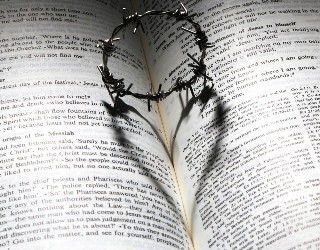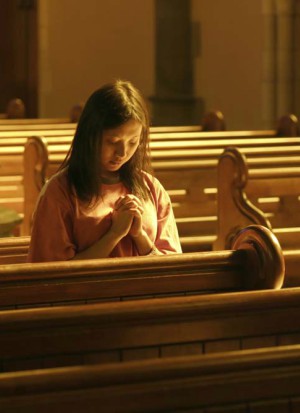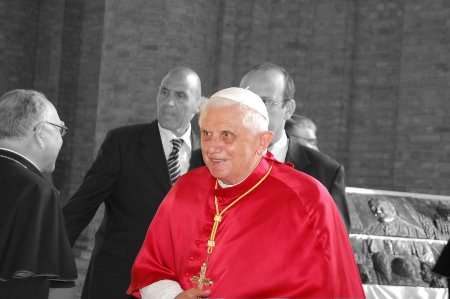We ask you, humbly: don't scroll away.
Hi readers, it seems you use Catholic Online a lot; that's great! It's a little awkward to ask, but we need your help. If you have already donated, we sincerely thank you. We're not salespeople, but we depend on donations averaging $14.76 and fewer than 1% of readers give. If you donate just $5.00, the price of your coffee, Catholic Online School could keep thriving. Thank you.Help Now >
Alessandro Manzoni
FREE Catholic Classes
Italian poet and novelist, b. at Milan, 7 March, 1785; d. 22 May, 1873. He was the son of Pietro Manzoni, the representative of an old feudal family of provincial landowners with estates near Lecco, and his wife Giulia, the daughter of Cesare Beccaria, the famous writer on political economy . Donna Giulia was separated from her husband in 1792. After his school days under the Somaschi and the Barnabites, and a short stay at the University of Pavia, the poet grew up at Milan in mingled study and dissipation. In 1805, he joined his mother at Paris, where he imbibed Voltairean principles, and became intimate with Fauriel and others. At Milan, in 1808, he married Henriette-Louise Blondel, the daughter of a Swiss banker, who was a Protestant, and when, in 1810, she became a Catholic at Paris, Manzoni followed her back into the Church. Thenceforth his life was consecrated to religion, patriotism, and literature. He settled at Milan, the neighborhood of which he practically never left, save for a visit to Tuscany in 1827 for the purpose of making himself better acquainted with what he regarded as the ideal form of the Italian language. His creative work was all done between 1812 and 1827, after which he was mainly absorbed in linguistic studies. Among his chief friends were the Milanese romantic writer, Tommaso Grossi, the Piedmontese novelist and statesman, Massimo d'Azeglio, who married his daughter, and the philosopher Antonio Rosmini, with whom he was closely associated from 1827 until the latter's death in 1855. An ardent patriot, Manzoni was in the fullest sympathy with the movement for the liberation and unification of Italy. After the occupation of Rome in 1870, he was made a Roman citizen; but, whether from old age or the religious difficulty, he never went to the Eternal City to take his seat as a senator.
Manzoni's earliest poem "Il Trionfo della Libertˆ" (1801), an allegorical vision in the Petrarchian manner of liberty triumphing over tyranny and superstition, is markedly influenced by Vincenzo Monti, whom he claims as his master and hails as the greatest poet of the age. This and the poems that followed, "In morte di Carlo Imbonati" (1806) and "Urania" (1809), belong to the classical school of which Monti was the recognized head, and show the influence likewise of Parini and Alfieri. After his conversion, Manzoni's art changed no less than his life, and he became the chief representative of the romantic school, the principles of which he defended later in his letter "Sul Romanticismo" (1823 and 1871). At the same time he desired to make his work a literary defence of the Catholic faith. He began a series of twelve "Inni Sacri" to celebrate the chief feasts of the Church, of which only five were written: "La Resurrezione" (1812), "Il Nome di Maria" and "Il Natale" (1813), "La Passione" (1815), "La Pentecoste" (1822). In these he brought back the old medieval simplicity into Italian religious poetry, freeing it from the conventionalities that had become traditional since the Renaissance. Two patriotic lyrics, celebrating the Milanese insurrection of 1814 and Murat's proclamation of Italian nationality at Rimini in 1815, belong to the same epoch. His two tragedies, "Il Conte di Carmagnola" (1820) and "L'Adelchi" (1822), are noble works, but somewhat lacking in true dramatic qualities; inspired in part by Schiller and Goethe, they give expression to the national aspirations of the Italians at a time when these seemed far off from realization. This poetic period closes with "Il Cinque Maggio" (1822), an ode on the death of Napoleon, which remains the most popular Italian lyric of the nineteenth century.
"I Promessi Sposi", Manzoni's great masterpiece, was written between 1821 and 1825, and rewritten in 1840. Sir Walter Scott was not alone in regarding it as the greatest romance of modern times. Against the historical background of the Spanish oppression in Milan and the war of the Mantuan succession (1628-1630), we have the story of the love and fortunes of two young peasants, and a whole series of inimitable portraits of men and women painted with the art of a realist in the highest sense of the word. Earnestness of purpose is combined with a peculiarly delicate humour, and the author's moral intention, the application of Catholic morality to the study of life and history, is harmonized with his artistic instincts, and in no wise obtrudes itself upon the reader. Among Manzoni's minor prose works are the "Osservazioni sulla morale cattolica" (1819), a defence of Catholicism against the attacks of Sismondi; the "Storia della Colonna infame" (1840), an historical appendix to his romance; the dialogue "Dell' Invenzione" (1845); and an essay on the unity of the Italian language (1868). In his private life, Manzoni was under every aspect most admirable and exemplary; as a public character, he is the noblest figure in the Italian literature of the nineteenth century.
 Hi readers, it seems you use Catholic Online a lot; that's great! It's a little awkward to ask, but we need your help. If you have already donated, we sincerely thank you. We're not salespeople, but we depend on donations averaging $14.76 and fewer than 1% of readers give. If you donate just $5.00, the price of your coffee, Catholic Online School could keep thriving. Thank you. Help Now >
Hi readers, it seems you use Catholic Online a lot; that's great! It's a little awkward to ask, but we need your help. If you have already donated, we sincerely thank you. We're not salespeople, but we depend on donations averaging $14.76 and fewer than 1% of readers give. If you donate just $5.00, the price of your coffee, Catholic Online School could keep thriving. Thank you. Help Now >
We ask you, humbly: don't scroll away.
Hi readers, it seems you use Catholic Online a lot; that's great! It's a little awkward to ask, but we need your help. If you have already donated, we sincerely thank you. We're not salespeople, but we depend on donations averaging $14.76 and fewer than 1% of readers give. If you donate just $5.00, the price of your coffee, Catholic Online School could keep thriving. Thank you.Help Now >








 Daily Readings for Thursday, April 18, 2024
Daily Readings for Thursday, April 18, 2024 St. Apollonius the Apologist: Saint of the Day for Thursday, April 18, 2024
St. Apollonius the Apologist: Saint of the Day for Thursday, April 18, 2024 Aspiration: Prayer of the Day for Thursday, April 18, 2024
Aspiration: Prayer of the Day for Thursday, April 18, 2024

